Last Updated on: 5th August 2024, 02:37 pm
Just south of central Oaxaca are two overlooked yet fascinating historical sites that can be visited together in a single day. The 16th-century Ex-Convent of Cuilapam is an architectural marvel, despite never having being fully completed. The nearby tombs of Zaachila, meanwhile, contained some of the most exquisite pre-Hispanic artifacts ever discovered in Oaxaca.
Be sure to check the end of the article for information on reaching both sites from central Oaxaca, along with the best places to stay in the city.
The Ex-Convent of Cuilapam de Guerrero
Also known as the Monastery of Santiago Apóstol, the Ex-Convent of Cuilapam is located about 30 minutes southwest of central Oaxaca. The abandoned monastery now functions as a museum that’s open from 9:00-17:00, Mon.-Fri. At the time of writing, tickets cost $65 MXN.
The monastery was started by four Dominican monks in the 1550s. But construction carried on for a staggering 100 years. And in the end, construction costs grew so high that the project had to be abandoned.

Another theory for the halt in construction, however, is that the native population, who was being exploited for labor, had greatly dwindled over the decades. This ultimately left the monks with no workers.

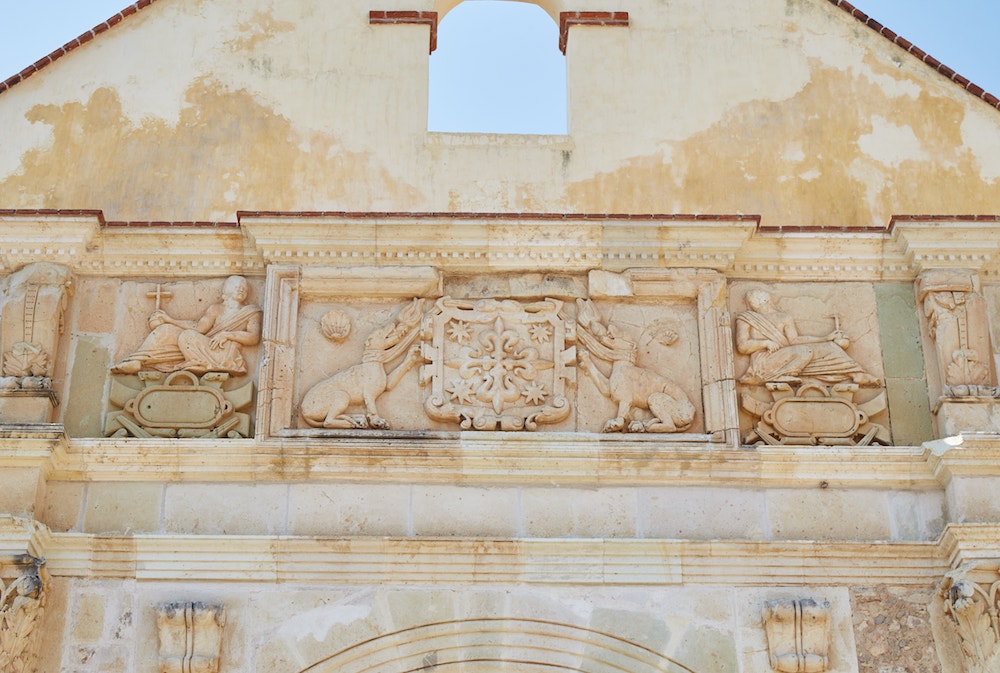
But while the building complex was never completely finished, it was indeed used as a monastery and convent at certain points in its lifetime. And as we’ll go over shortly, it even functioned as a prison during the tumultuous era of a newly-independent Mexico.



After admiring the ornate facade, a visit starts with a walk through the spacious Basilica, with its numerous arches and notable absence of a roof. This is easily one of the most photogenic parts of the Ex-Convent of Cuilapam, and you’ll likely be wondering why the site doesn’t get more visitors.
Around the corner, you’ll find a relatively small church that actually remains in use to this day, though it’s not part of the official museum.
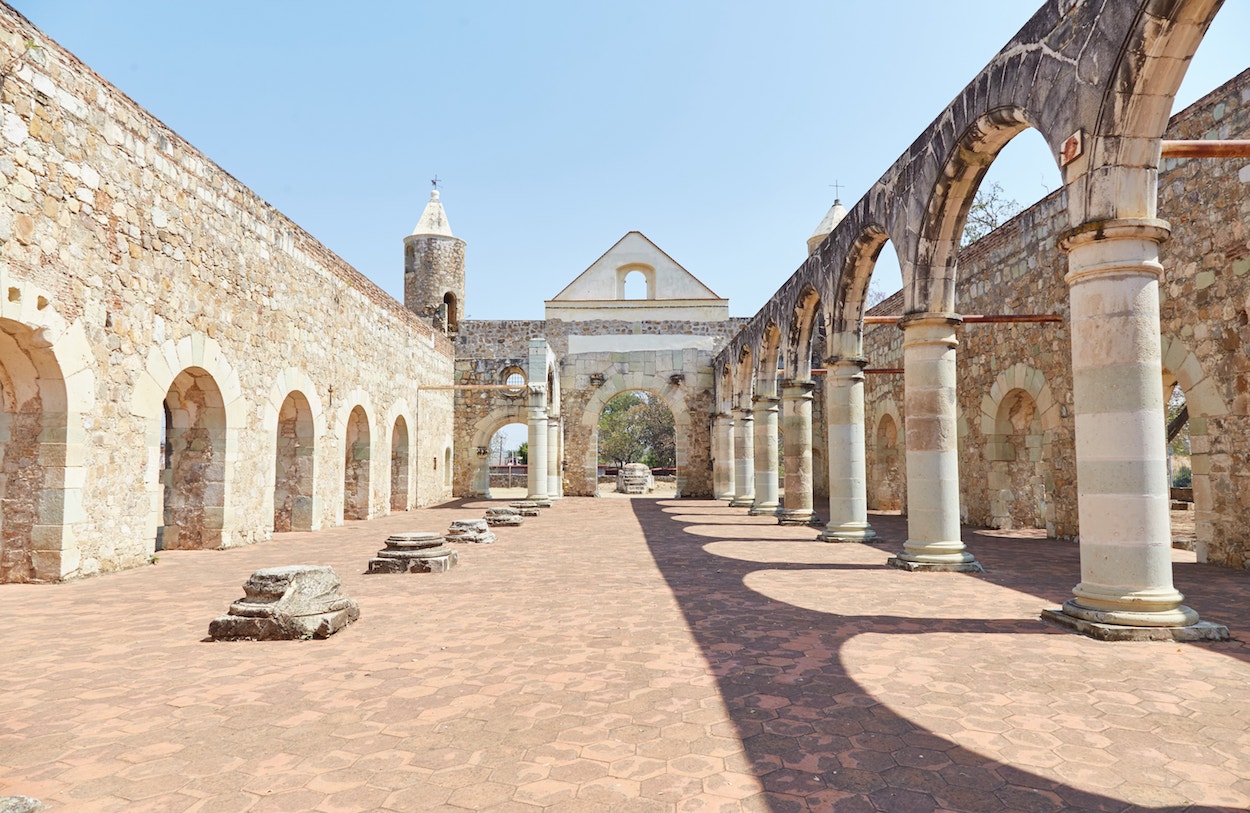
Stepping inside and buying your ticket, it’s time to explore the interior. Near the entrance, you’ll find a small exhibition in Spanish dedicated to Mexican revolutionary general (and briefly President of Mexico in 1829) Vicente Guerrero, after whom the town of Cuilapam de Guerrero was named.
Guerrero would ultimately be ousted from the presidency and captured by political rivals who imprisoned him right here at this abandoned monastery. And it’s also here that he would be executed by firing squad in the year 1831!


A top highlight of exploring the Ex-Convent of Cuilapam is its well-preserved 16-century frescoes, some of which are said to contain a mix of Christian and Mixtec/Zapotec iconography.
Supposedly, this was done to attract members of the local indigenous community in hopes of converting them to Catholicism.

Speaking of native art, the museum now hosts a small collection of Zapotec stone carvings from various locations throughout Oaxaca, including sites like Yagul.



Your visit to the Ex-Convent of Cuilapam will continue on the second floor, from which you can enjoy a clear view of the central courtyard. You’ll also pass by numerous workshops where staff are restoring ancient artifacts discovered throughout the area.
Also don’t miss the chance to walk onto the roof for a great view of the monastery and surrounding Cuilapam de Guerrero.
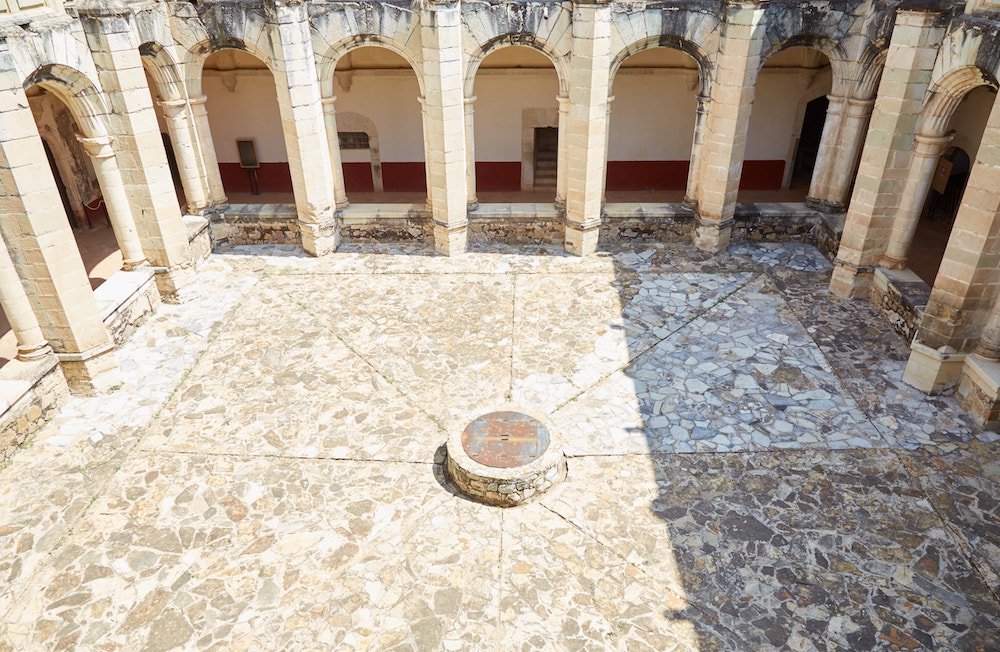
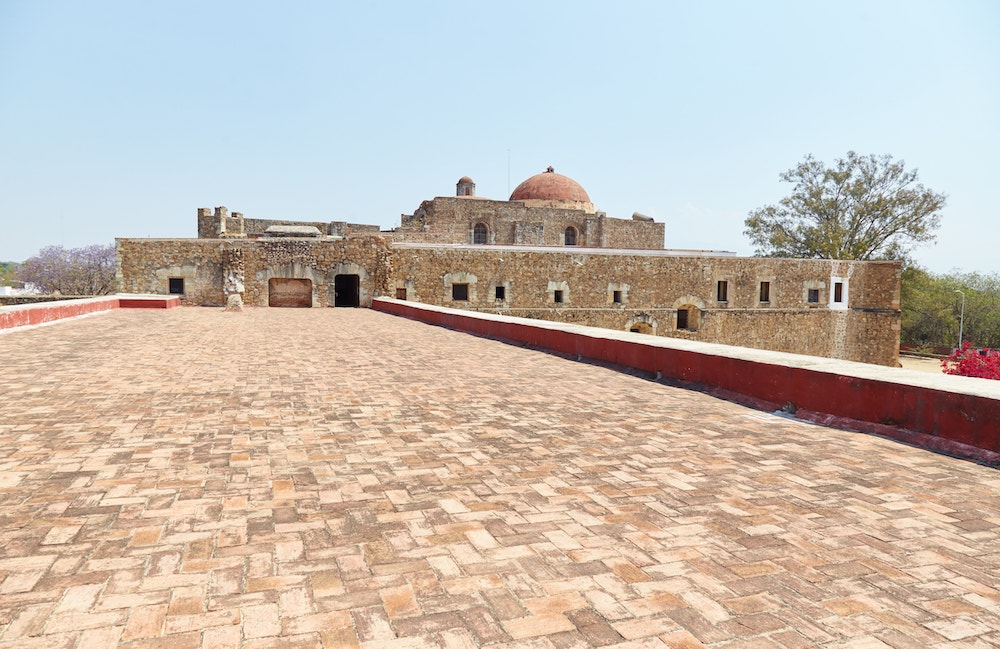
While only coming to town for the monastery, on the way there I spotted a sign for Casa de Cortés, located right by the town square. Though the Spanish conqueror’s main residence was in Cuernavaca, he had numerous smaller houses built for him throughout Mexico, and this was one of them.
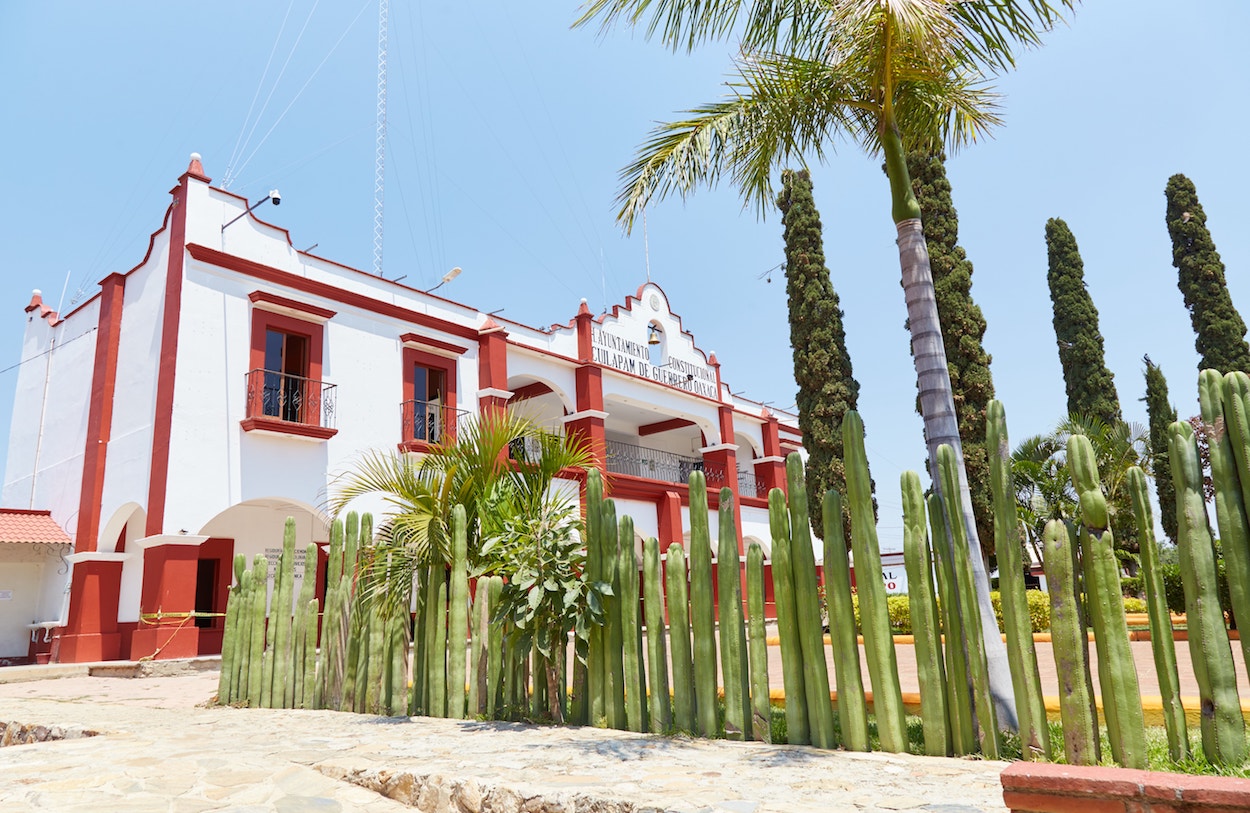
Not much remains of the house besides the main arcade and some of its elaborate windows, together with an original coat of arms.
Also located near the town square is a local market. This would be a good place to stop for lunch before moving on to Zaachila, about 15 minutes away by car.
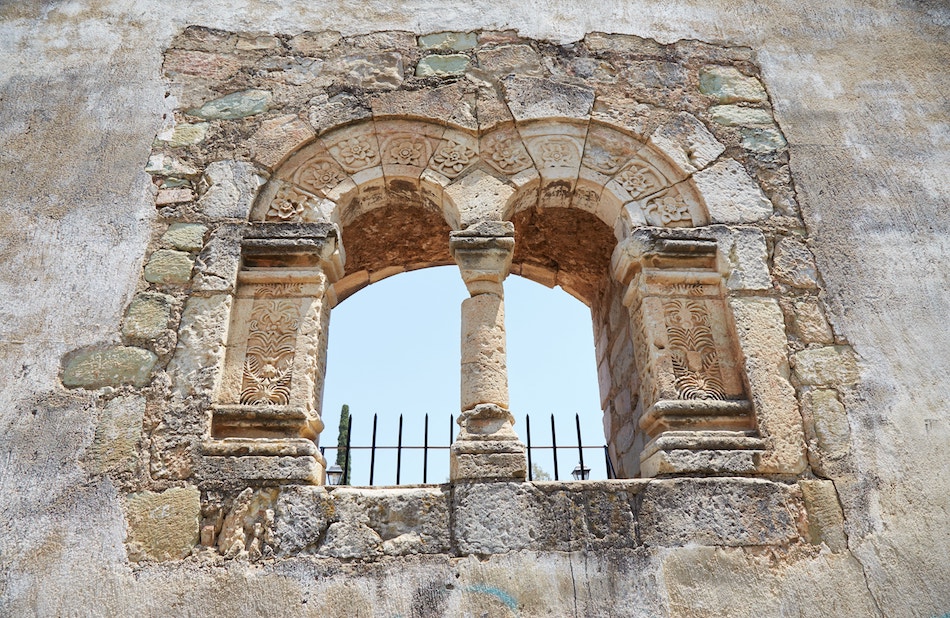
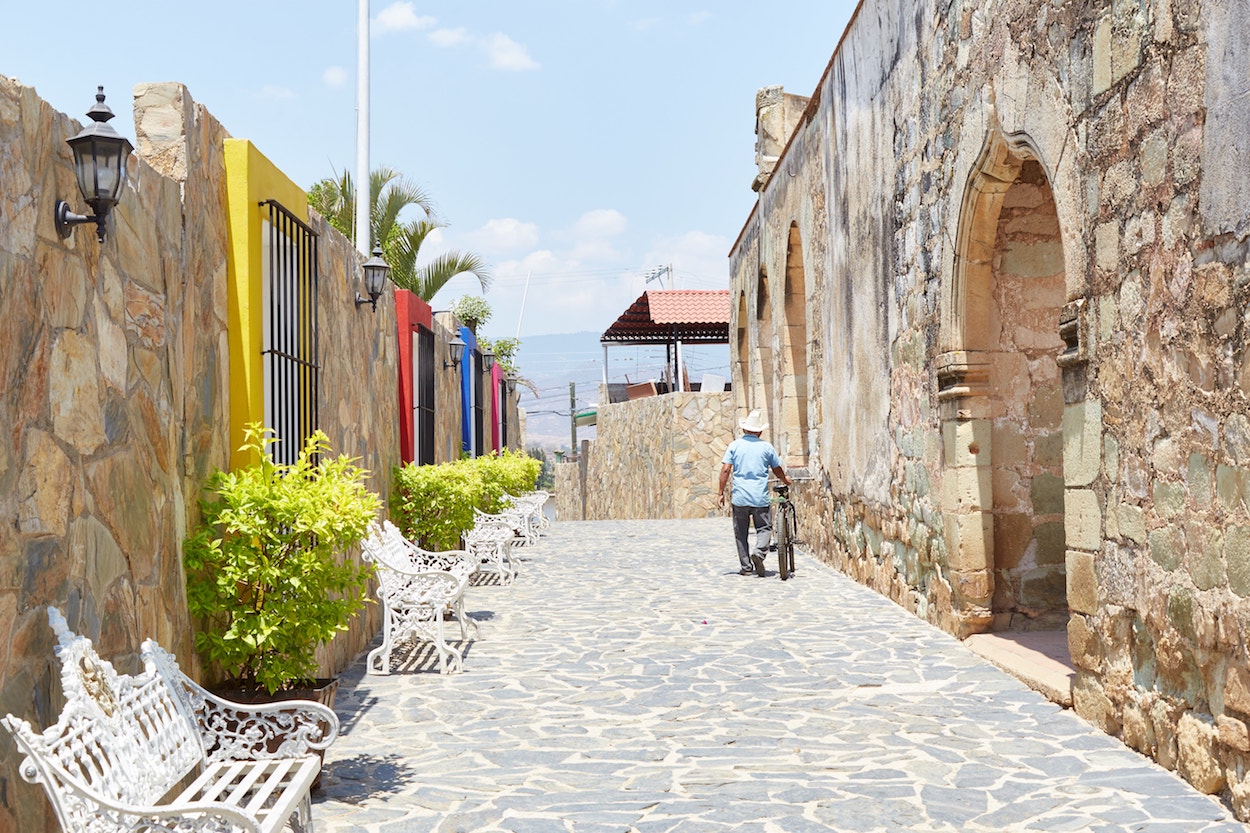
Zaachila
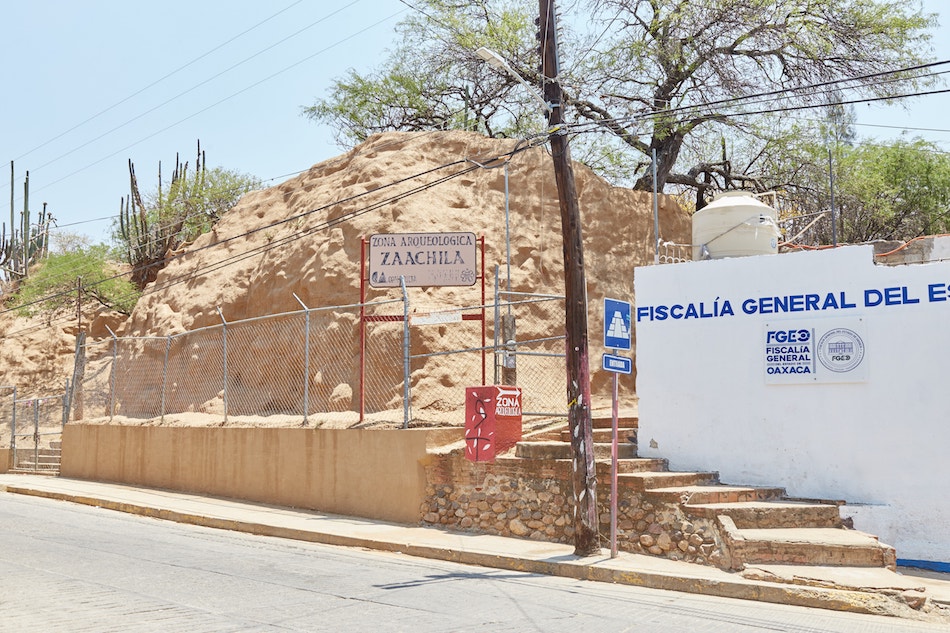
While one would never guess by looking at it now, Zaachila long served as the Zapotec capital after the fall of Monte Albán. Accordingly, it was the most prominent city in the region when the Spanish arrived.
Zaachila, in fact, even served as capital during the heyday of Mitla, though the two archaeological zones couldn’t look more different today. We’ll go into why that is below, but it’s important to understand before your visit that Zaachila now solely consists of a single, largely empty tomb.
But what makes it and its neighboring tomb (currently closed) so special?
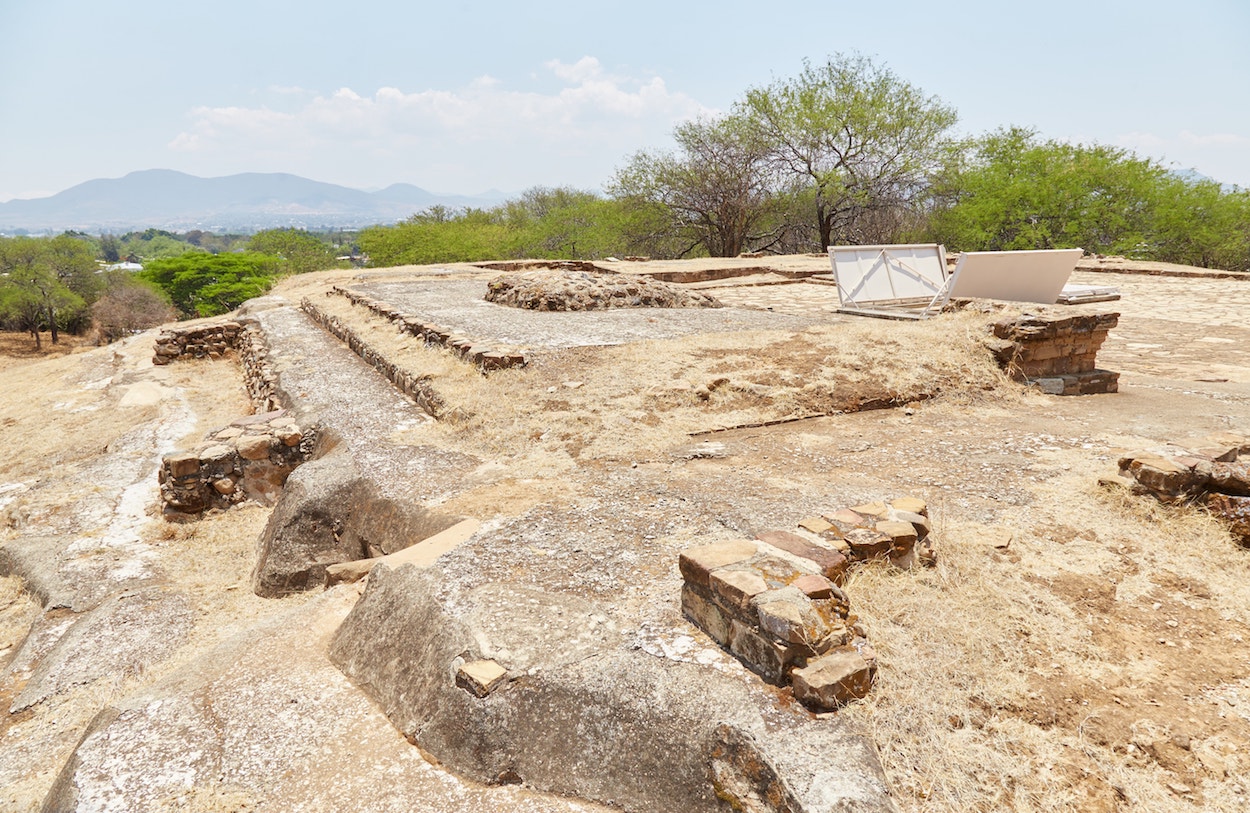
Along with Monte Albán’s Tomb 7, the Zaachila tombs could be considered the King Tut’s tombs of Oaxaca, as they were some of the only tombs discovered in the region to have never been looted.
As such, they contained a plethora of untouched artifacts that have taught us much about ancient Zapotec and Mixtec society.
Inconveniently, however, you won’t find any of these artifacts at Zaachila itself. For that, you’ll have to travel to the National Museum of Anthropology in Mexico City. For those who can’t make it, you can see photos of some of the prominent tomb findings below.
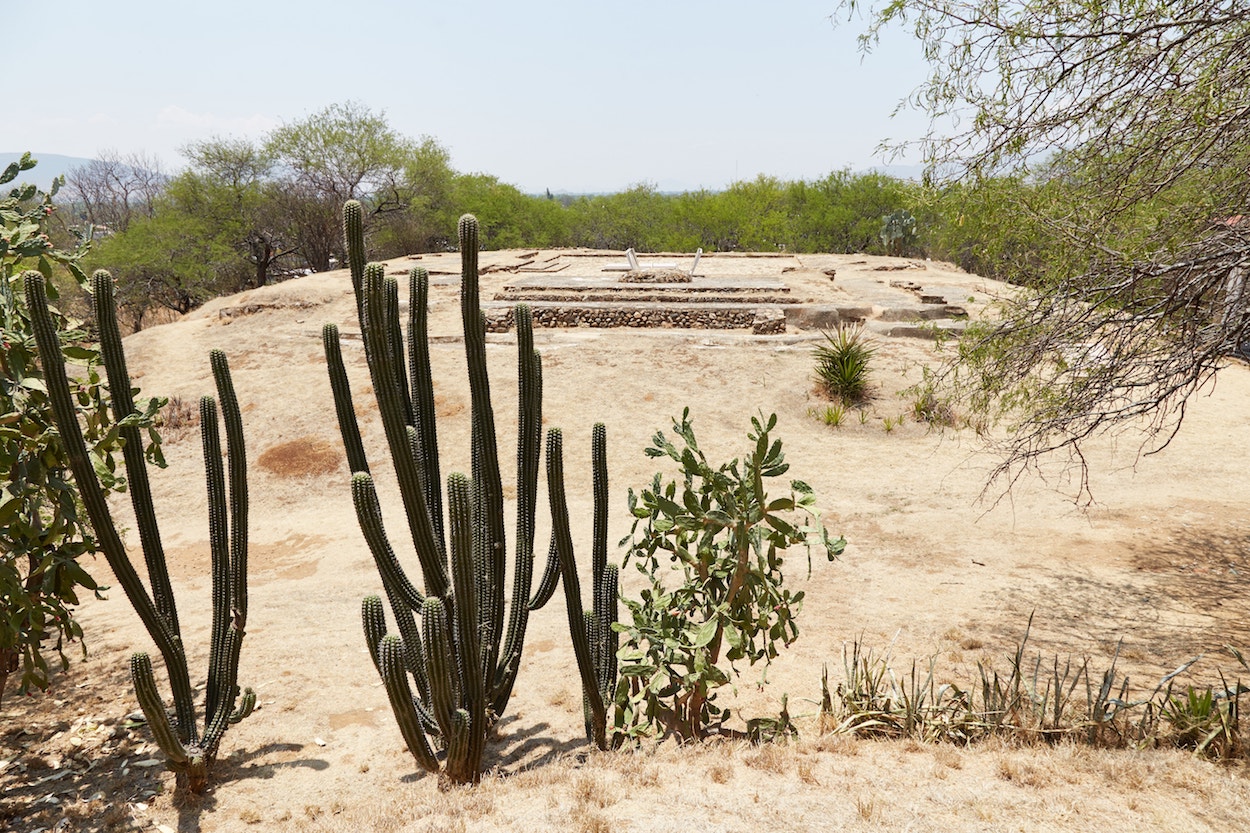
There still seems to be some uncertainty over whether these tombs are Zapotec or Mixtec, but we do know that the Mixtecs invaded the region in the 14th century, ruling Zaachila for a time. The tombs may date to this period, as the artifacts discovered within largely resemble the Mixtec style.
The Zapotecs, however, would eventually regain control over Zaachila. It’s possible, then, that the tombs were Zapotec, albeit with strong Mixtec influence.
Tomb 1
Tomb 1 is the only tomb which visitors can enter at the time of writing. It was the burial place of a king we only know as ‘5 Flower,’ based on a date inscribed on the wall. But the bones of numerous other individuals – no lesson than eleven – were also found within.
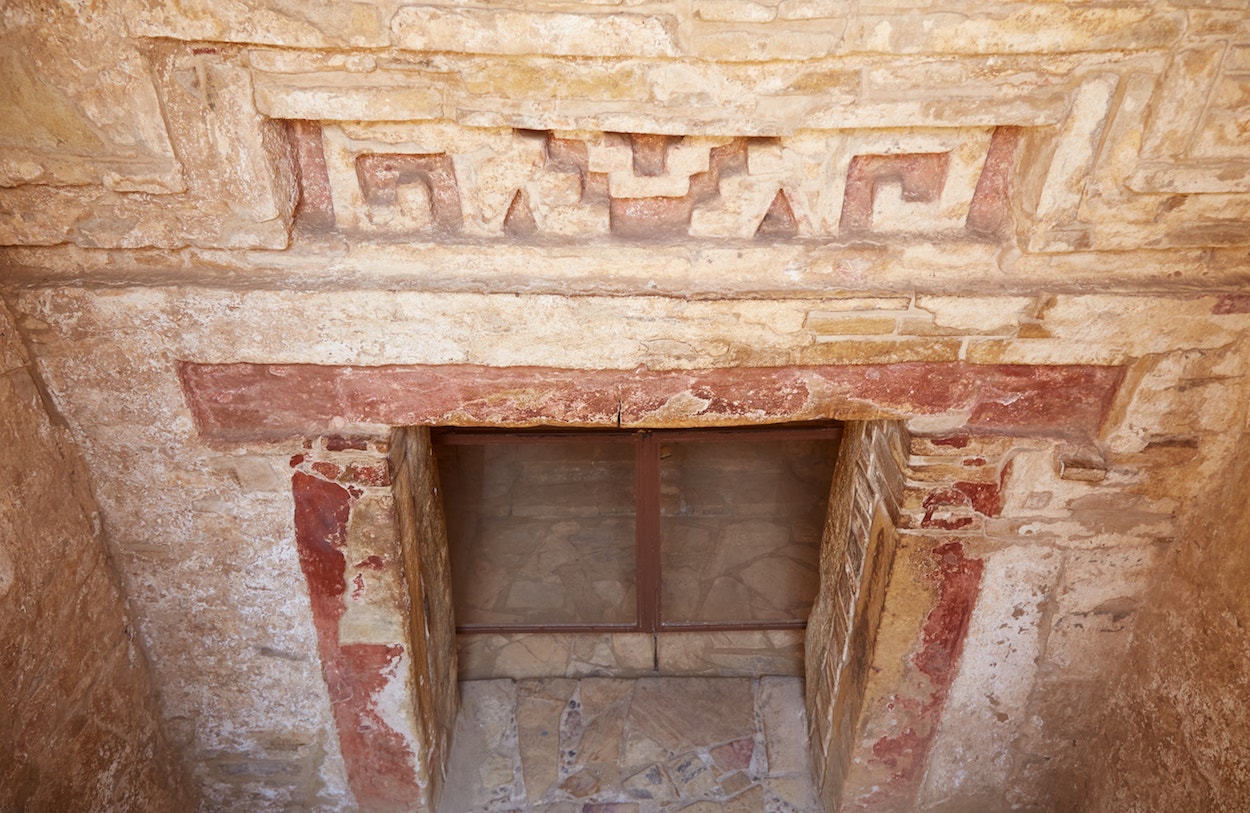
As you walk down the staircase, you’ll soon reach the entrance, adorned with a frieze reminiscent of the Mitla style.
Tomb 1 is aligned north-south, and stepping inside, you’ll find niches carved into the walls. Above them is a white stucco owl, considered a messenger of death in the ancient Zapotec religion.

At the far end to the left is a frieze of 5 Flower, while the east wall depicts an individual called 9 Flower (also based on the date glyphs). Interestingly, both carry bags in their hands.

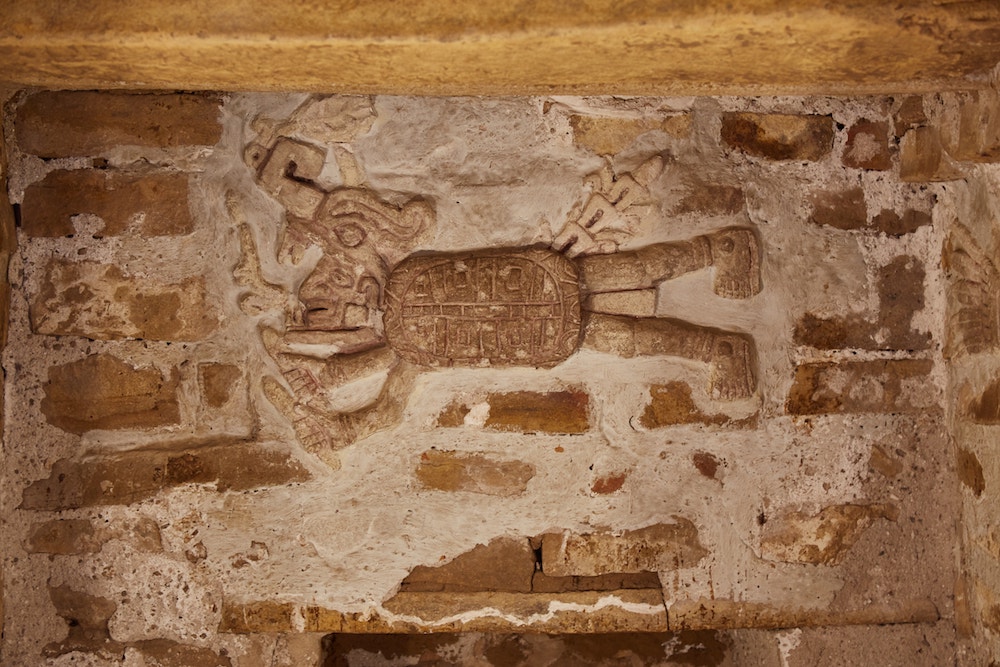
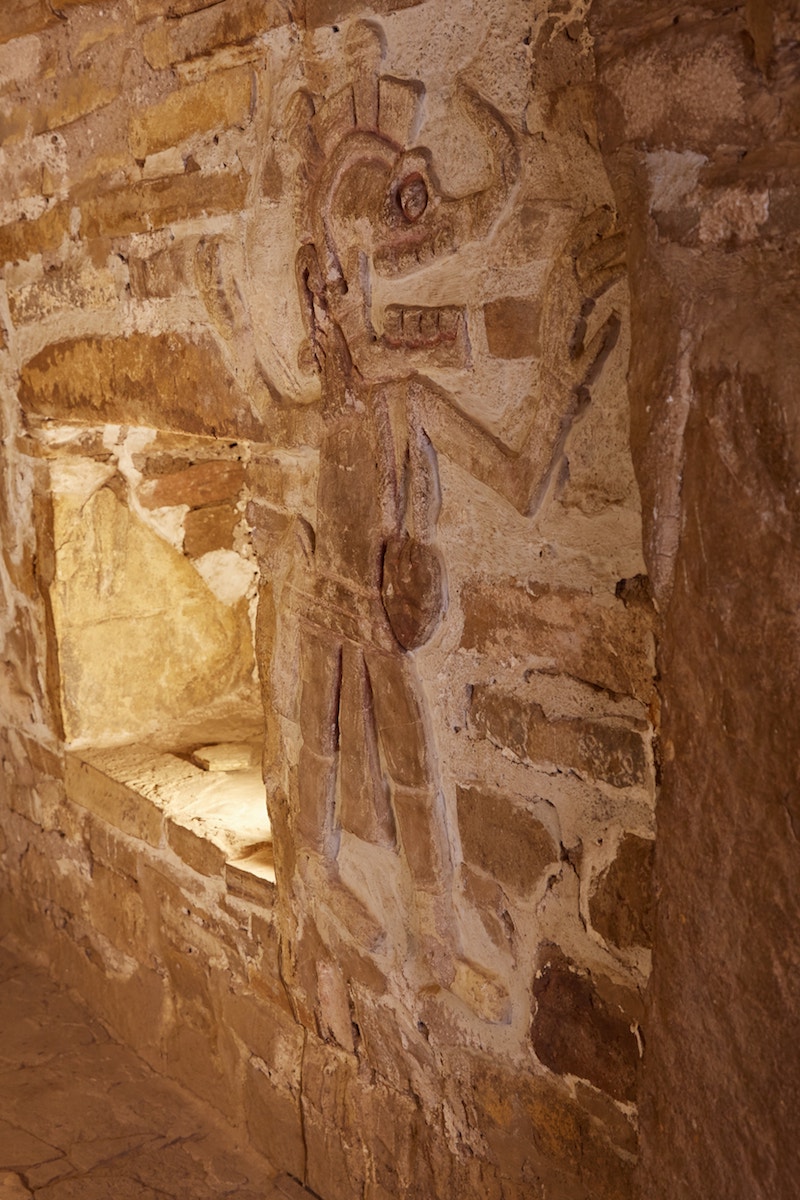
As far as the Tomb 1 findings on display in Mexico City, among the most remarkable is a small hummingbird goblet.
Representative of the Mixtec style of ceramic art, it also features depictions of jaguars and eagles along its side.
Another interesting piece is a deer jar. As seen in the colorful Mixtec codices, deers were symbols of the sun.
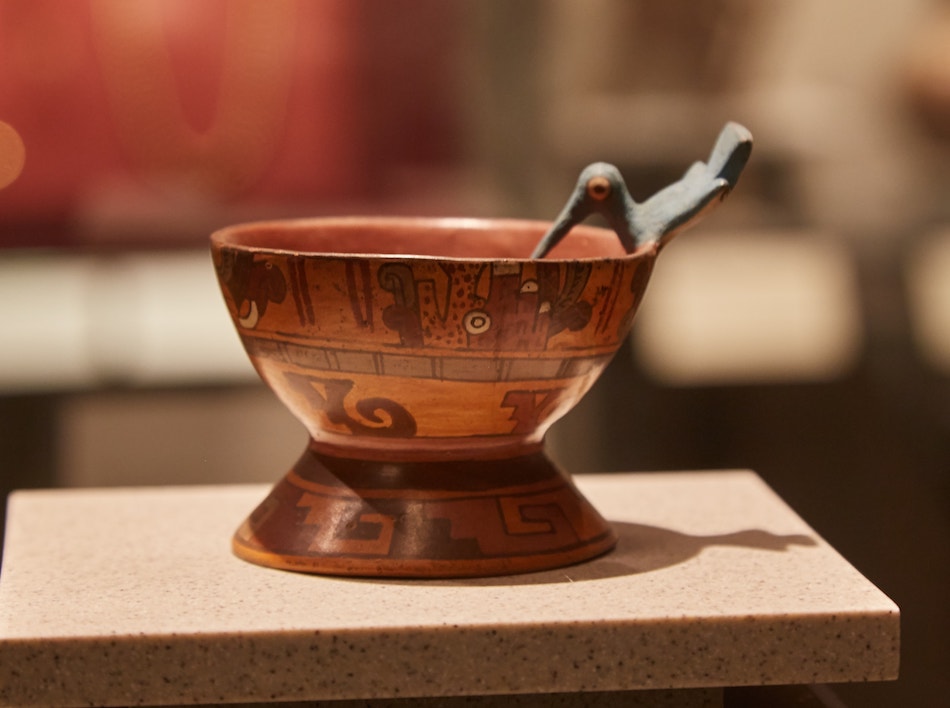
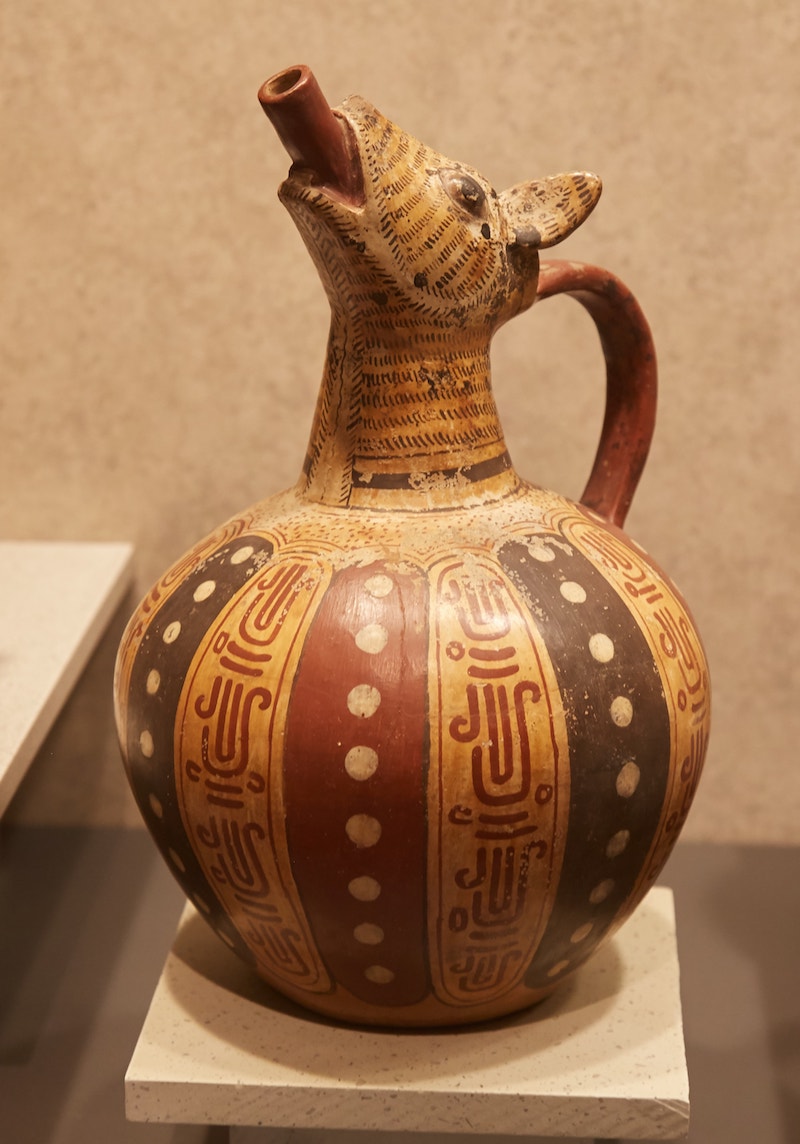
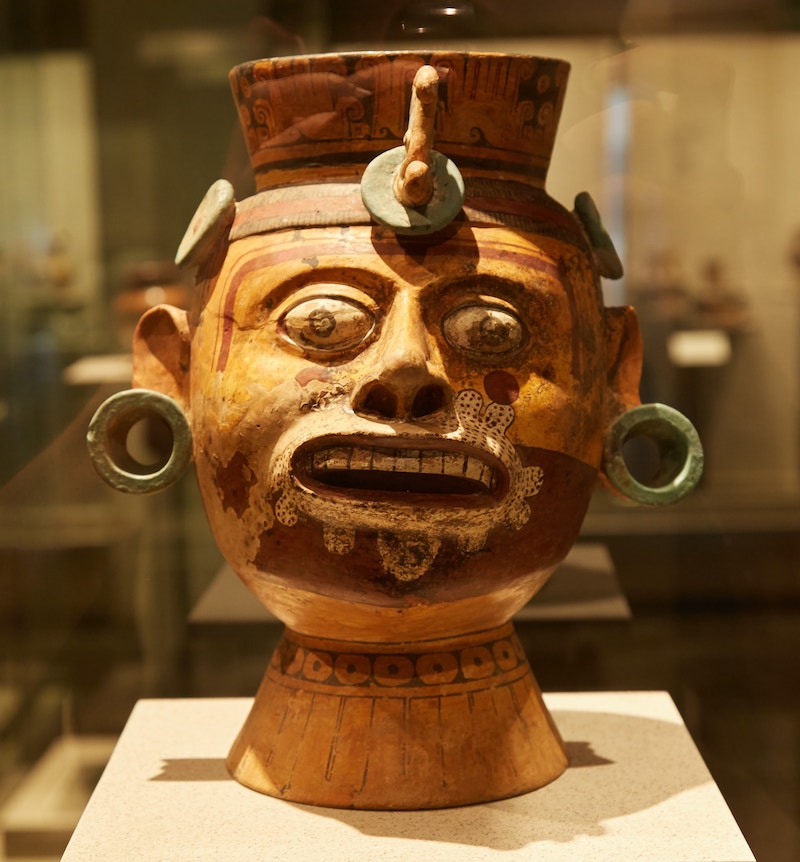
You’ll also find an evocative vase representing Toho Ita, the god of summer, dance, music and love. Note the butterfly-like figure covering his mouth.
Like many other Mesoamerican cultures, the Zapotecs and Mixtecs were fond of jade funerary masks, which you’ll also find on display at the National Museum of Anthropology.
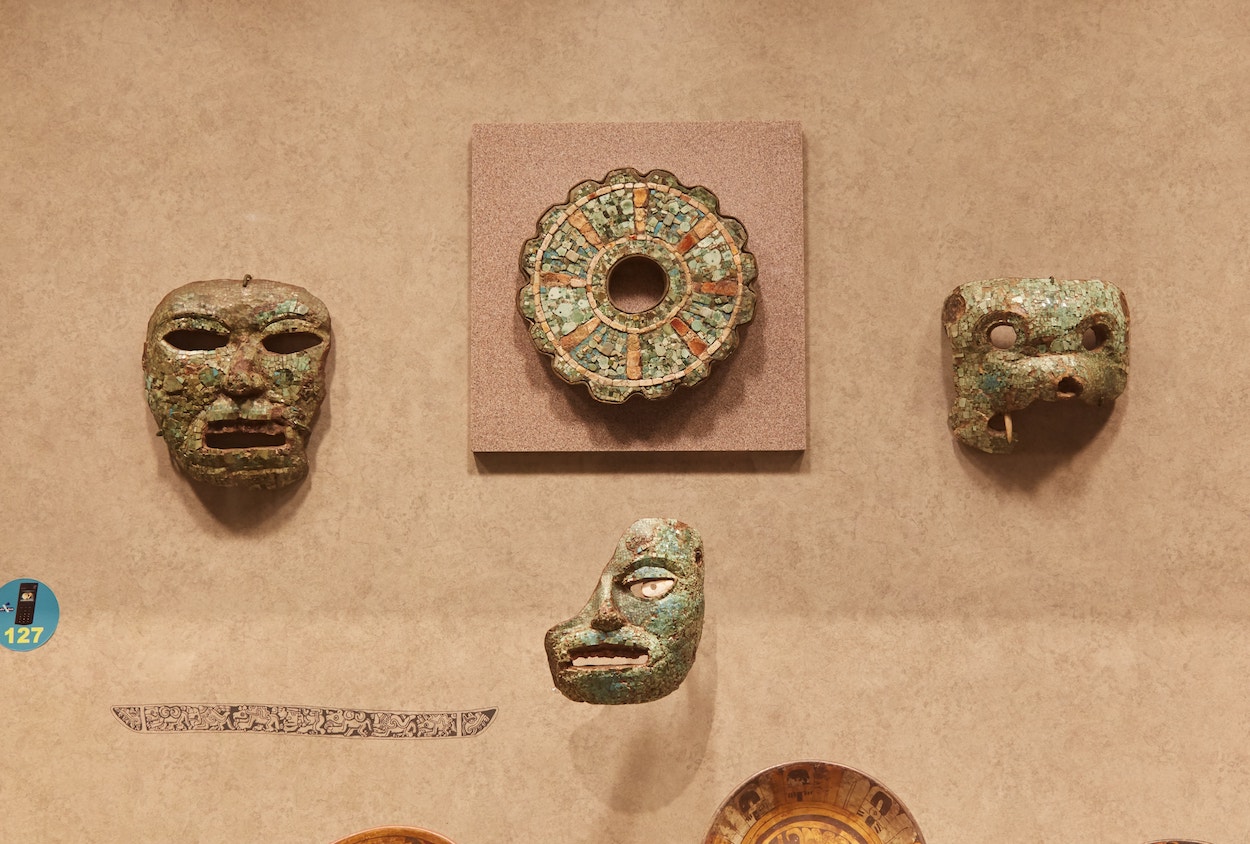
Tomb 2
Tomb 2, aligned east-west, is the only other tomb excavated at Zaachila. And as mentioned above, it cannot currently be entered. Based on pictures, though, it appears largely similar to Tomb 1, albeit with fewer stucco reliefs.
Skeletons of twelve individuals were discovered inside, together with a large collection of fascinating artifacts.
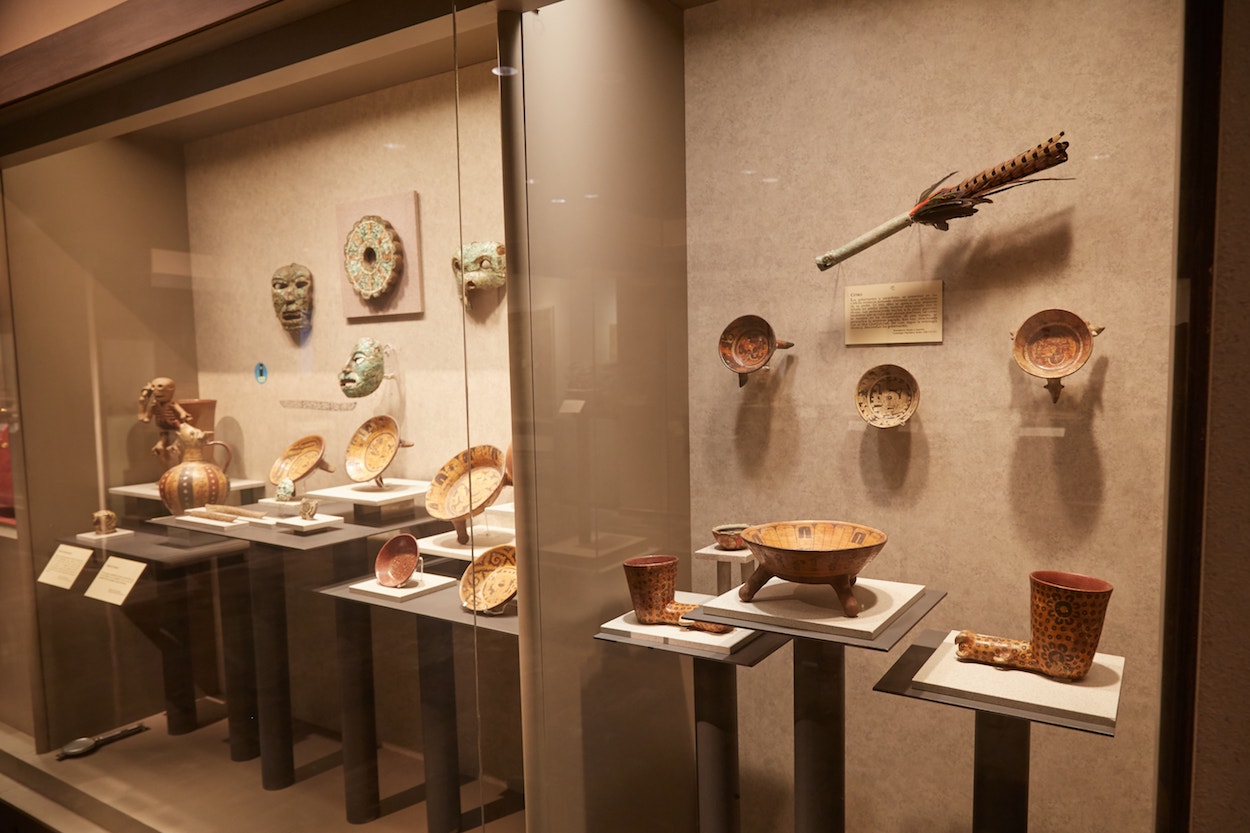
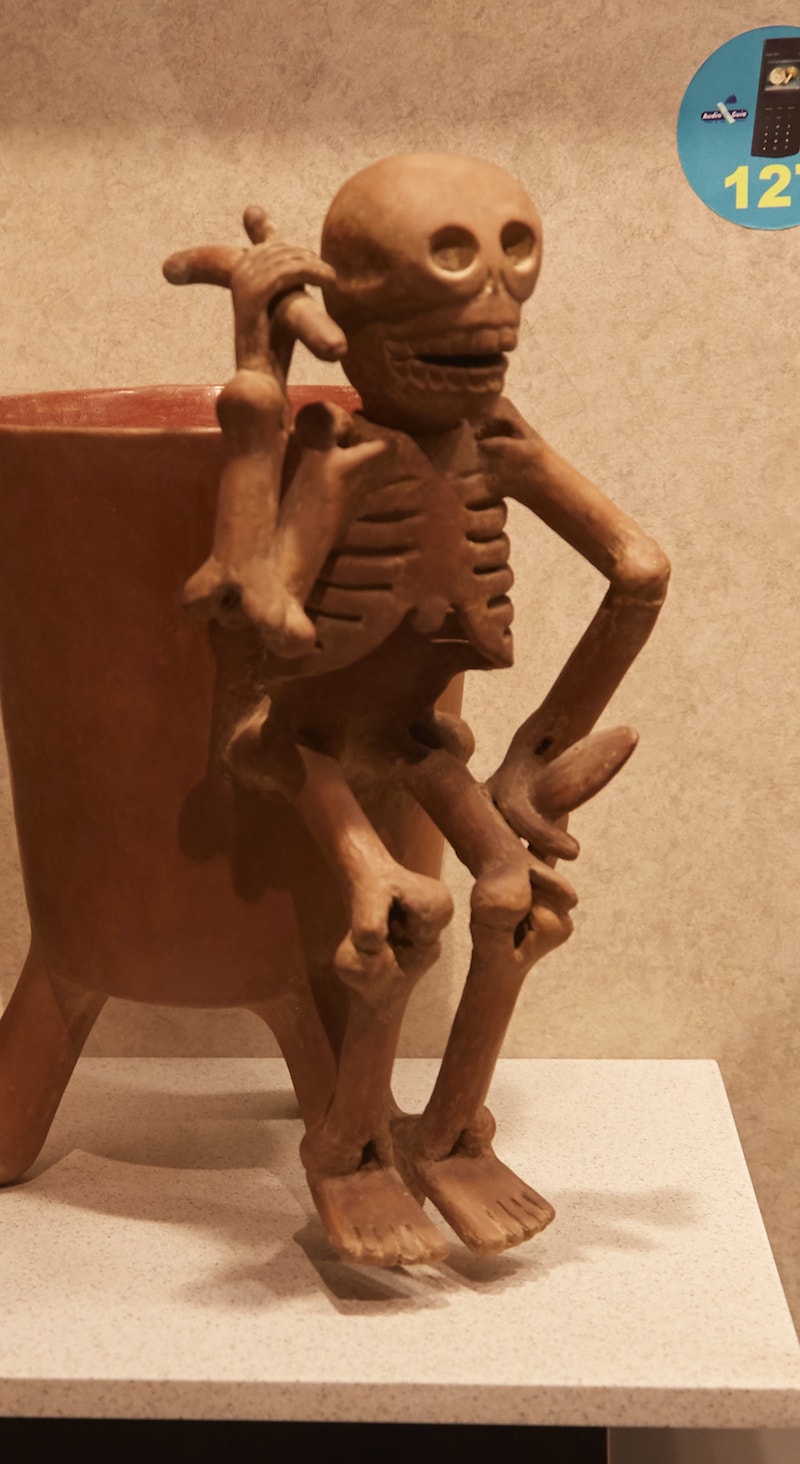
One of the most iconic finds from Tomb 2 on display is a figurine of the God of the Underworld, Yya-Dzandaya. The skeleton holds a flint knife – a symbol of death – in his left hand, along with a cane in his right.
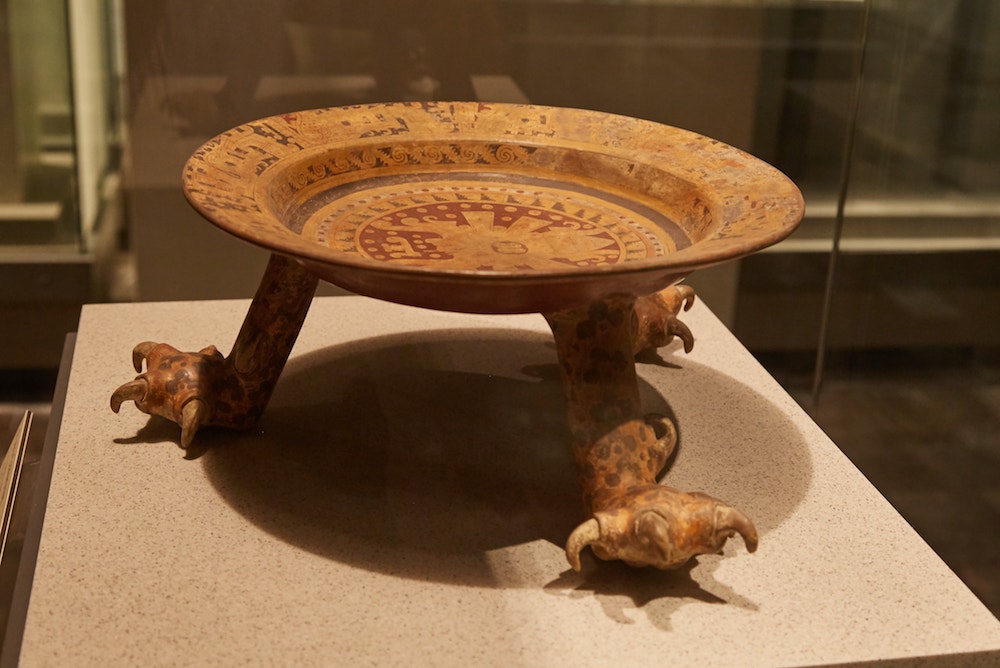
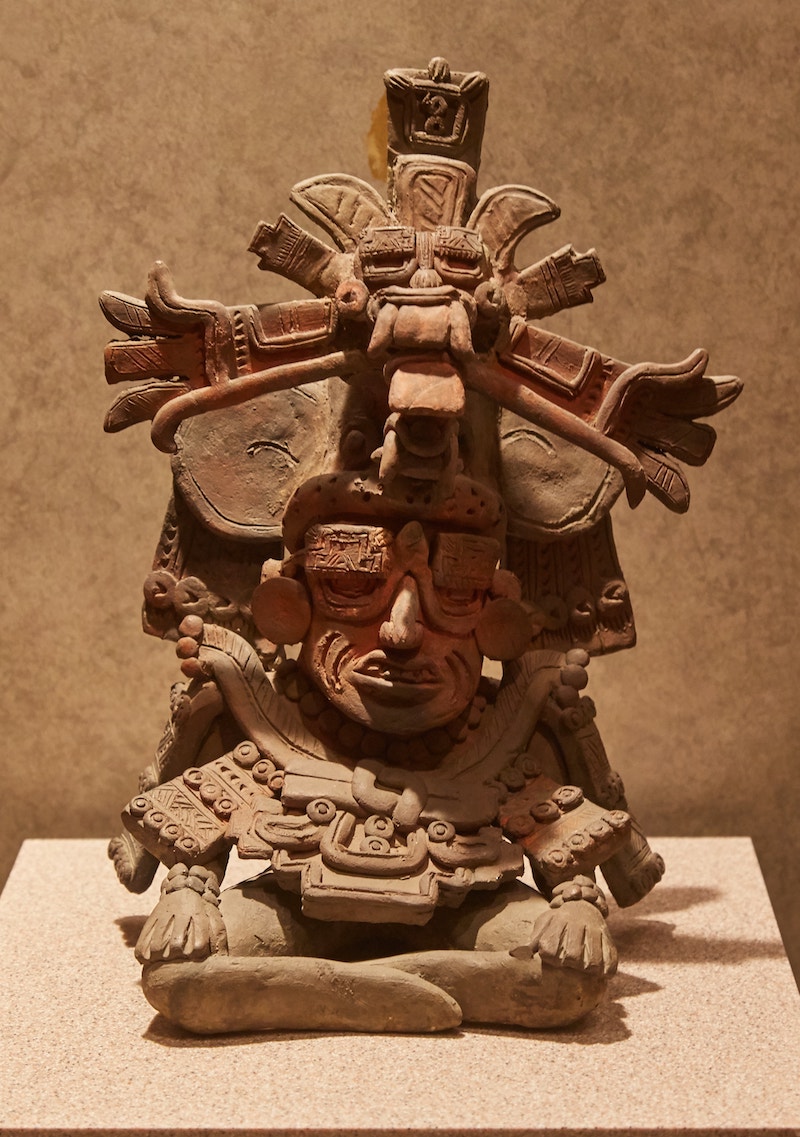
Another important Tomb 2 finding is a ceremonial dish with jaguar feet. In its center is a butterfly-like being representing the god Toho Ita, the same divinity depicted on a vase in Tomb 1.
Another beautiful piece from this tomb is an urn representing the ‘Old God,’ who sits cross-legged wearing an elaborate headdress.
Why Just Two Excavated Tombs?
Historically speaking, Zaachila is one of the most important ancient cities in the region. Why, then, is it not an extensive archaeological site like others in Oaxaca? It’s certainly not due to a lack of interest from archaeologists.
During colonial times, the Zaachilans revolted numerous times against the Spanish, and the inhabitants of modern Zaachila are known for their rebellious spirit to this day. When archaeologists first tried to excavate the ruins in the twentieth century, they were driven out of town by locals.
Tomb 1 and Tomb 2, in fact, could only be excavated thanks to military intervention! The 1962 excavation was led by Roberto Gallegos Ruiz, and it remains the last major excavation at Zaachila to date.
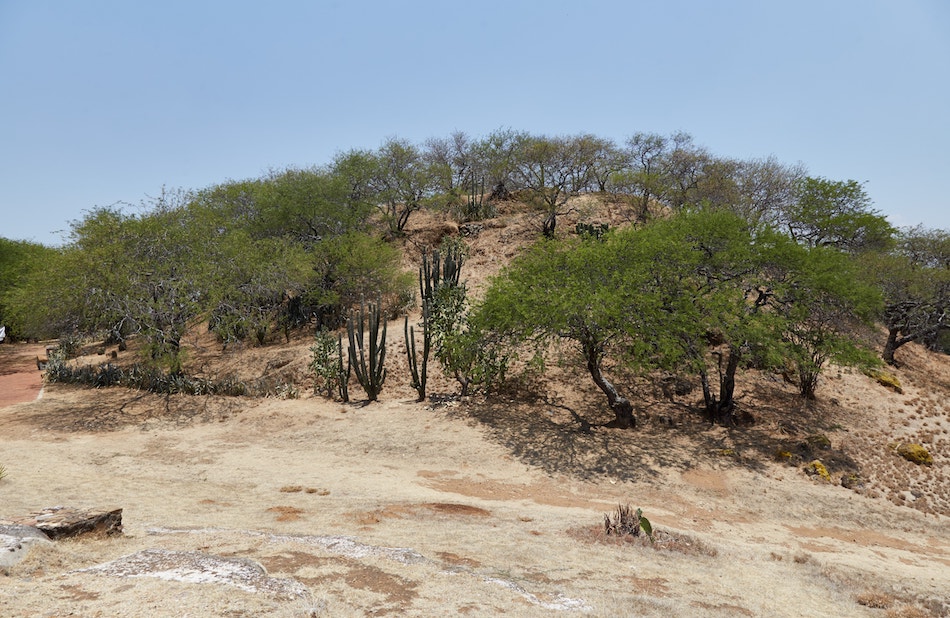
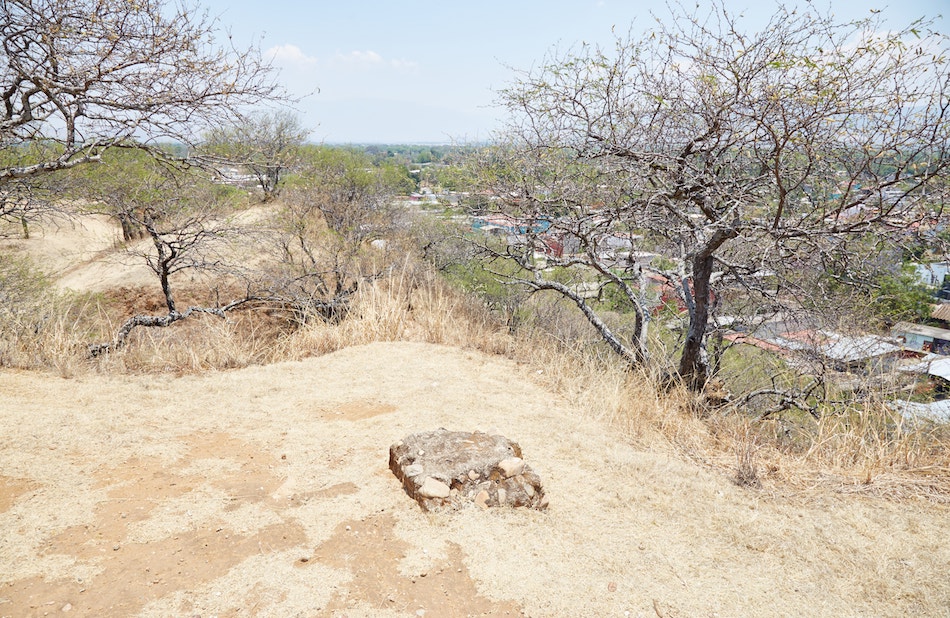
During your time at the site, you’ll notice a large mound, believed to contain numerous temples and additional tombs. Just don’t expect to find much.
You may be wondering why Zaachilans don’t want the ruins to be excavated. It largely has to do with the fact that the tombs belong to the modern inhabitants’ ancestors, and they feel that it’s wrong for their resting places to be tampered with.
This raises an important question which concerns archaeological digs both in Mexico and throughout the world. How much time is supposed to pass before it’s acceptable for a person’s ‘final resting place’ to transition from a grave to an archaeological site? Should it ever?
Additional Info
While I’d originally planned to visit Cuilapam and Zaachila via public transport, I ended up going to both locations with a friendly Mexican family whom I’d met at Yagul several days prior. So while I don’t have direct experience with the transportation process, here’s what I came up with during my research:
On Google Maps, search for ‘Terminal de Autobuses Zaachila Yoo,’ located at Bustamante 603. It seems like this company runs buses to both Cuilapam and Zaachila. These are larger second-class coach buses rather than minivans or cars.
Unfortunately, I can’t say exactly where the bus will drop you off in either town. But both towns are small enough that I’d imagine walking to the Ex-Convent of Cuilapam or the Zaachila ruins should be fairly easy.
Based on what I saw at both Cuilapam and Zaachila, colectivo (shared) taxis run regularly between the two towns. Along the main roads, simply look out for a vehicle with either town name written on it and flag it down.
Right now, it appears that no tours exist to both Cuilapam and Zaachila. This packed full-day tour, at least, does include Cuilapam as a stop.
Oaxaca is not a very large city, and as long as you’re staying relatively central, you can easily get around on foot. Many look for accommodation near the central square, or Zócalo, which is indeed a good location. Popular hotels here include Hotel Casona Oaxaca and La Catrina del Alcala.
If you can, an even more ideal location than the Zócalo would be a bit further north near the Templo de Santo Domingo de Guzmán or El Llano park. While still very central, I consider this to be a nicer area than that of the Zócalo, (Oaxaca is so compact, though, that the two areas are just 15 minutes apart on foot.)
A popular affordable hotel around here is Posada Don Mario.
Alternatively, the neighborhoods of Xochimilco and Jalatlaco are very popular places to stay and are within walking distance of the historical center. A highly-rated hotel in Xochimilco is Hotel Fortin Plaza, and in Jalatlaco, Hotel Cazomalli Oaxaca.
Further north, Reforma is another popular district. Mision de Los Angeles would offer easy access to all of the city’s main areas.
